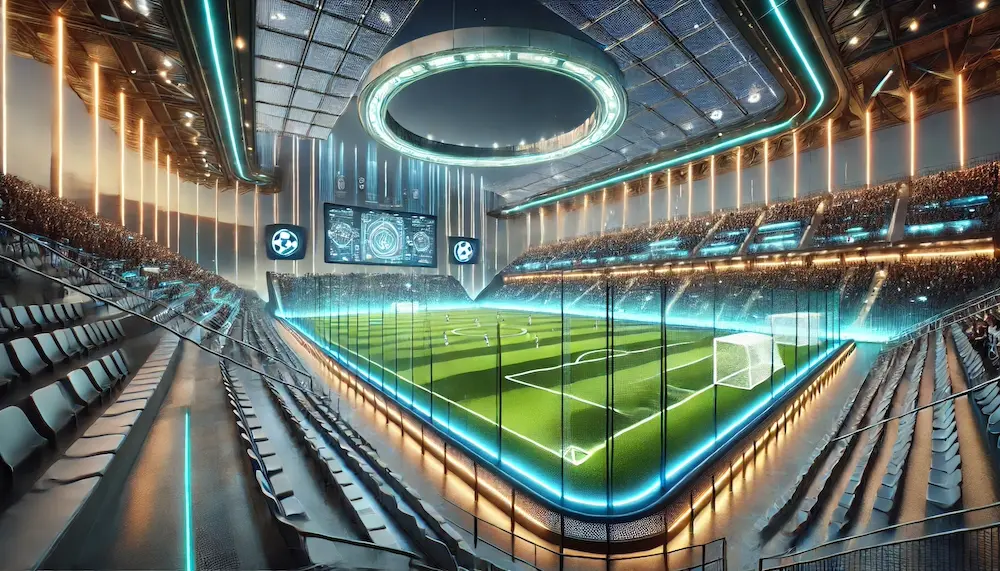Futuristic soccer fields are redefining the landscape of sports architecture by integrating cutting-edge technology, innovative designs, and sustainable practices. This article explores their evolution, key features, applications, and considerations for implementation.
Introduction to Futuristic Soccer Fields
Futuristic soccer fields transcend traditional designs by incorporating advanced technologies and materials to enhance player performance and spectator experience. These fields often feature smart systems, adaptable structures, and eco-friendly solutions, setting new standards in sports facility design.
History and Origins of Futuristic Soccer Fields
The concept of futuristic soccer fields emerged from the need to improve functionality, sustainability, and fan engagement. Early innovations included the introduction of artificial turf and improved lighting systems. Over time, advancements such as retractable roofs, hybrid grass systems, and smart stadium technologies have been integrated, transforming the way soccer is played and experienced.
Key Features of Futuristic Soccer Fields
Futuristic soccer fields are characterized by several innovative features:
- Smart Stadium Technology: Integration of IoT devices, sensors, and high-speed connectivity to enhance fan experience and operational efficiency. For instance, in-building solutions provide high-capacity mobile connectivity throughout the stadium, ensuring seamless and immersive experiences for attendees.
- Retractable Pitches and Roofs: Adaptable structures that allow venues to host multiple events and sports, maximizing utility. The Tottenham Hotspur Stadium in London features a retractable pitch, enabling it to accommodate both football and NFL games.
- Sustainable Design Elements: Use of renewable energy sources, rainwater harvesting systems, and eco-friendly materials to minimize environmental impact. For example, Etihad Park in New York City is designed to be the first fully electric stadium in Major League Soccer, incorporating solar panels and water harvesting systems.
- Advanced Fan Engagement Technologies: Implementation of augmented reality (AR) and virtual reality (VR) experiences, interactive screens, and mobile applications to engage fans. Stadiums are utilizing mobile apps that provide real-time updates, allow fans to order food and beverages, and even offer augmented reality experiences.
Applications of Futuristic Soccer Fields
- Multi-Purpose Venues: Designed to host various sports and entertainment events, increasing revenue streams and community engagement. Stadiums like the Sapporo Dome in Japan feature innovative designs that allow them to host multiple types of events, from football games to concerts.
- Enhanced Training Facilities: Equipped with advanced analytics and virtual training environments to improve athlete performance. Virtual reality has made significant strides in soccer training, offering players simulated environments to hone their skills.
Considerations When Choosing Futuristic Soccer Fields
- Technological Integration: Ensuring compatibility and scalability of new technologies to future-proof the facility. Advanced technology, including sensors and mobile devices, has the power to transform football stadiums from analog arenas to cutting-edge coliseums.
- Sustainability Goals: Aligning design choices with environmental objectives to reduce carbon footprint. Implementing sustainable practices, such as using recycled materials and energy-efficient systems, is crucial for reducing the ecological footprint.
- Cost and Maintenance: Evaluating the financial implications of implementing and maintaining advanced features. While futuristic designs offer numerous benefits, they also come with higher upfront costs and maintenance considerations.
Conclusion
Futuristic soccer fields represent the convergence of technology, design, and sustainability, offering enhanced experiences for players and fans alike. As innovations continue to emerge, these facilities will play a pivotal role in the evolution of sports architecture, setting new benchmarks for functionality and engagement.
